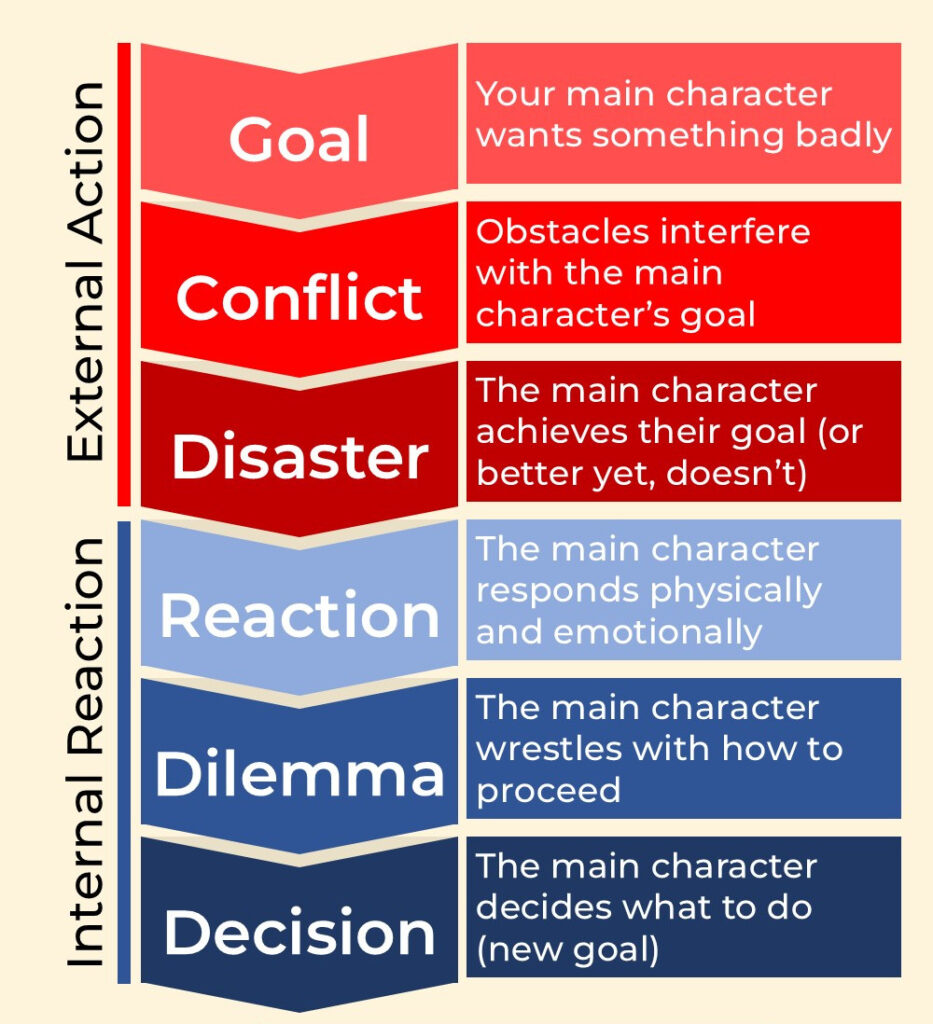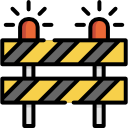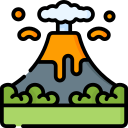Scene Structure Overview
What is a Scene?
Unfortunately, there’s no universal definition of scene. However, Jim Mercurio offers a pretty good one, which I’m tweaking slightly.
A SCENE IS
a small unit of story
unified by time and space and point of view,
which encapsulates a single action goal
and culminates in change,
involving both story and character.
Changing either the time, the location, or POV in the middle of a scene can be confusing to the reader. Thus, ending a scene when any of those change allows us to “reset” for the next scene. A lot can happen in one scene, and it’s not uncommon for a character to perform many actions. However, those actions are focused by having a single goal in that scene.
Main Components of a Scene

Scenes begin with a character (the main character for that scene) wanting something. A goal gives your character something to focus their energy upon.
If our character easily attains their goal, we have a boring story. Adding obstacles (anything that conflicts with the goal) to our character’s desire adds uncertainty and interest to our story.
Does the character achieve their goal? At some point in the scene they either do, or they don’t. (Pro tip: it’s more fun when they don’t!)
So far, our scene has focused on the external action and external conflict. Regardless of the outcome of the goal (won or lost), it’s time to focus on our character’s internal reaction to what’s happened.
The outcome of the goal generally brings about a change in direction for the character. They need to figure out what to do next. Well-written scenes make this a difficult choice (a dilemma) for their characters.
Ultimately the character needs to decide what to do next and commit to that decision. That intention becomes the goal for the next scene. In this way, we can chain scenes together.
Dwight Swain, who came up with these components, used different (and confusing) terminology to describe them. The “External Action” components he called a “scene” and the “Internal Reaction” he called a “sequel.” His intent was that the action is always followed by a sequel. Since these terms have other literary meanings, I prefer to avoid them.
In my opinion, using all six components in every scene is a little formulaic. Although there is a natural order to these components, you can occasionally drop one of the components or slice and dice the scenes to add variety to your plot.
Dive deeper into each scene component by clicking on them below.
Icons made by Freepik from www.flaticon.com






